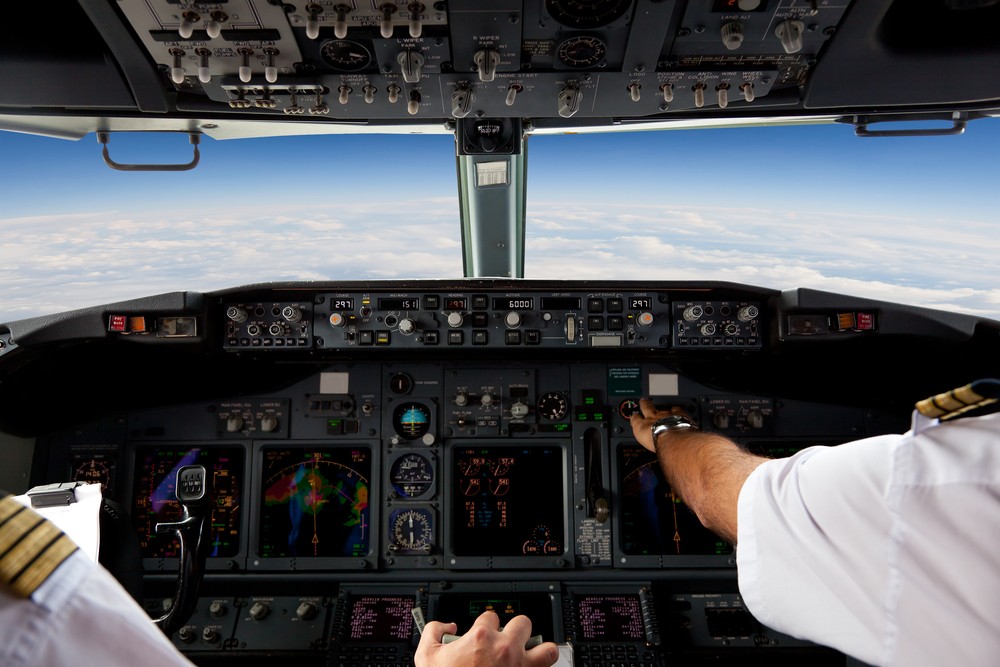Asia's travel boom is in trouble as a pilot shortage worsens
Change Size
 One possible solution to ease the crunch is to have one pilot on short-haul flights instead of two, although pilot unions may oppose any such move, said Mr Harbison. (Shutterstock/File)
One possible solution to ease the crunch is to have one pilot on short-haul flights instead of two, although pilot unions may oppose any such move, said Mr Harbison. (Shutterstock/File)
A
n unprecedented travel boom in Asia has spawned new budget carriers and millions of first-time fliers, but a shortage of pilots is threatening to choke that demand.
Bamboo Airways in Vietnam was the latest low-cost carrier (LCC) to start services this year and more are expected to join the race.
In Southeast Asia alone, LCCs have about 1,400 aircraft on order, compared with fewer than 400 for full-service carriers, according to CAPA Centre for Aviation. With the supply of pilots lagging behind, the airlines will struggle to find skilled cockpit crew.
"There's a real crunch coming," Peter Harbison, executive chairman of Sydney-based CAPA said in Singapore. "For new airlines, it's much, much harder and it's going to be a real struggle."
Global traffic is set to double in the next two decades with the biggest increase expected in the Asia-Pacific region, where almost 4 billion passenger journeys are expected, according to the International Air Transport Association.
Boeing Co forecasts the region needs 16,930 new planes and about 261,000 pilots through 2037. That means the current fleets and the number of pilots will need to double during that period, according to the planemaker.
The strain is already showing.
IndiGo, Asia's biggest budget carrier by market value, last month decided to scrap dozens of flights every day through March after many of its pilots exhausted their annual limit on flying hours.
Taiwan's China Airlines Ltd averted a crisis this month by agreeing to improve working conditions at an annual cost of almost US$4 million (S$5.39 million) after the pilots union, citing fatigue among other complaints, went on a seven-day strike.
Even some outside Asia are running into problems: Emirates, the world's biggest long-haul airline, said in April that a shortage of pilots forced it to cut flights.
To avoid a squeeze, some airlines have set up their own academies to build a pool of pilots they can tap into. Jeju Air Co, South Korea's biggest budget carrier, AirAsia Group Bhd, Southeast Asia's largest by fleet, IndiGo and Indonesia's Lion Air are among the airlines that have set up training schools.
"If I think back to five to 10 years, we weren't seeing any training academies set by airlines," said Wendy Sowers, director of commercial marketing at Boeing. "The supply-demand dynamics are coming into play. You are seeing the system respond."
Read also: Traveling to discover our common humanity
Some airlines are also "quietly" cutting the minimum hours required for pilots to be qualified as captains as they struggle to fill positions quite quickly, said Steven Greenway, president of Swoop, an ultra-low-cost-carrier that's part of WestJet Airlines Ltd in Canada.
The problem of pilot shortage has been around for a while, but has become more serious in recent years, a Jeju Air spokesman said.
CAPA's Mr Harbison says Southeast Asia and India are likely to face the brunt of the shortfall, with the most impact felt by four carriers - AirAsia, IndiGo, Lion Air and VietJet, the Vietnamese airline that has embarked on one of the biggest international expansions by a budget carrier in the region.
Benyamin Ismail, chief executive officer of AirAsia X Bhd, said the issue at the group isn't as bad as the other airlines, and having its own academy "helps keep the flow of talent we need."
Representatives for VietJet, Lion Air and IndiGo didn't immediately respond to requests for comments.
In the meantime, their fleets have been expanding rapidly.
For instance, IndiGo, operated by India's InterGlobe Aviation Ltd, is likely to add at least 40 more aircraft in the year ending March 31, 2020, after inducting about 62 in the current year, according to CAPA.
The airline, which also operates smaller ATR aircraft on regional routes, has 430 Airbus A320-family jets on order, on top of a previous deal to buy 100 narrow-body jets.
AirAsia has 375 on order for single-aisle planes, while VietJet has 216, according to the websites of Airbus SE and Boeing.
One possible solution to ease the crunch is to have one pilot on short-haul flights instead of two, although pilot unions may oppose any such move, said Mr Harbison.
"If you can have driverless cars, you can have airplanes that have only one pilot," he said. "It's a matter of shutting down an industry or seriously constraining growth."






